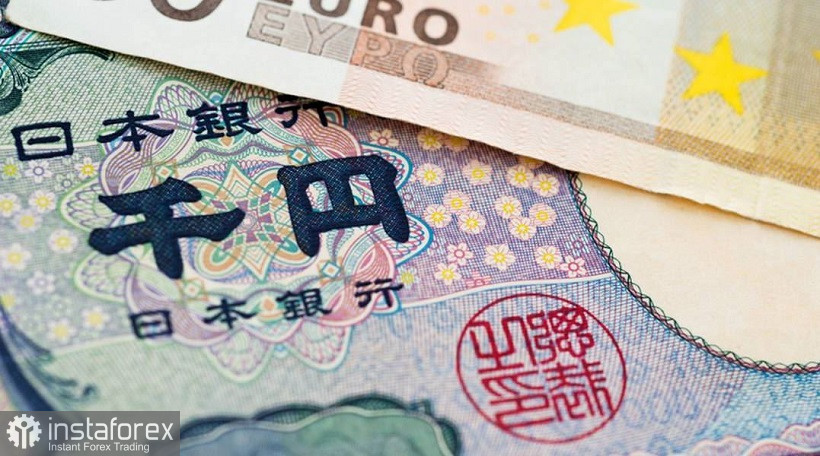The EUR/JPY cross-pair is demonstrating a pronounced upward trend. After hitting a multi-month low of 133.35 (August 2), the pair reversed and partially offset its losses. The Japanese currency was in temporary demand as a defensive asset against the background of the scandalous visit of Nancy Pelosi to Taiwan. But after the most pessimistic scenarios did not materialize, the yen lost its attractiveness, while interest in risk increased.
As you know, the Japanese currency is a safe harbor instrument, so the growth of anti-risk sentiment significantly (but temporarily) strengthened the position of the yen against the basket of major currencies—even the USD/JPY pair actively resisted the onslaught of dollar bulls in July. In other words, the yen has already worked out its "own resources" for independent growth, and paired with the euro, the currency is clearly losing ground.

To date, the upward trend in EUR/JPY is due to several reasons. First of all, this is the divergence of the positions of the ECB and the Bank of Japan. Despite the fact that inflation in Japan has been above the target level of the Central Bank for several months, Bank of Japan Governor Haruhiko Kuroda continues to persistently ignore this fact. Commenting on recent trends, he has repeatedly stated that the regulator needs to create conditions for "sustainable inflation" in the country's economy, while the increase in the consumer price index this year is "due to single factors, such as rising energy prices."
Following the results of the last meeting, the Japanese regulator kept all the parameters of the monetary policy in the same form: only one member of the Board of the Central Bank voted against this decision. The BOJ left rates unchanged and 10-year bond yield curve control at 0.25%. At the same time, Kuroda again repeated the already familiar mantra that the Central Bank is ready to "do not hesitate to take more steps to ease policy, given the impact of the pandemic on the economy."
In turn, the European Central Bank, following the results of the July meeting, raised interest rates by 50 basis points, implementing the most hawkish scenario. According to the head of the ECB, the further pace of rate hikes will depend on the incoming data. At the same time, Christine Lagarde acknowledged that economic activity in the eurozone is slowing down, while the risks to the inflationary outlook remain: they are shifted upwards and intensifying.
The latest inflation release eloquently confirmed the words of the head of the European Central Bank. The general consumer price index in July rushed up again, reaching 8.9%. Despite the fact that in June it was at the level of 8.6%. This is another historical record—the maximum value of the indicator in the entire history of observations, that is, since 1997. And here it is necessary to emphasize that the July result turned out to be higher than the forecasts of most experts. In particular, analysts polled by Reuters had expected it to come out at 8.7%. The core consumer price index (excluding volatile energy and food prices) also showed strong momentum, climbing to 4.0%.
After the publication of this report, the market again started talking about the fact that the European Central Bank will decide on another 50-point increase in the rate following the results of the next meeting. Indirectly, this assumption was confirmed by ECB Governing Council member Martins Kazaks. He allowed a significant increase in the rate in September while pointing to the dynamics of inflation growth in the euro area.
In addition to the divergence of the positions of the ECB and the BOJ, there is another fundamental factor that pushes the EUR/JPY cross-pair up. This is the so-called "Taiwan case." As mentioned above, the resonant visit of the speaker of the lower house of Congress to Taiwan did not provoke the development of the most apocalyptic scenarios. But it did not pass without a trace: China organized large-scale military exercises around the island, including with the launch of missiles. Today it became known that these exercises have entered their final phase. The Ministry of Defense of the country reported that the Chinese army "successfully completed the assigned tasks in the water area and airspace near Taiwan as part of the exercises around the island." And although the exercises will last until August 15, this fundamental factor has already become obsolete—it will not fuel interest in the yen as a defensive interest.
Thus, the existing fundamental background contributes to the development of the upward trend of EUR/JPY. However, it should be noted here that the cross approached the resistance levels, near which longs look risky. Therefore, long positions should be considered after they have been overcome. We are talking about the levels of 138.20 and 138.40 (the middle line of the Bollinger Bands on the daily chart; the lower boundary of the Kumo cloud on the same timeframe). After consolidating above the target of 138.40, you can consider buying with the main target of 140.50—this is the upper limit of the Kumo cloud on the D1 timeframe.
 English
English 
 Русский
Русский Bahasa Indonesia
Bahasa Indonesia Bahasa Malay
Bahasa Malay ไทย
ไทย Español
Español Deutsch
Deutsch Български
Български Français
Français Tiếng Việt
Tiếng Việt 中文
中文 বাংলা
বাংলা हिन्दी
हिन्दी Čeština
Čeština Українська
Українська Română
Română

